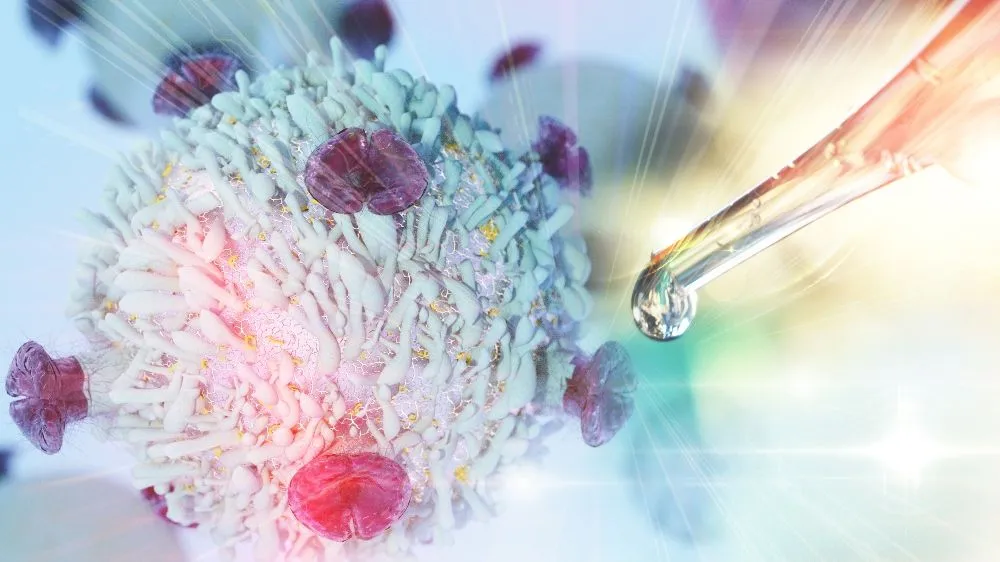Black Myeloma Patients Have Better Outcomes Than White Patients When Treated Equally

Black multiple myeloma patients can have better survival rates compared to their white patient counterparts when treated equally, according to new research from the Medical College of Wisconsin.
Using the SEER Medicare database with data from 1999 and 2017, the researchers reviewed differences in survival between non-Hispanic Black patients (3319) and non-Hispanic white patients (20,831) with multiple myeloma. They then broke Black patients into four subgroups areas based on: 1) demographics 2) socioeconomic status 3) presentation factors (socioeconomic factors plus comorbidities) and treatment factors (presentation variables plus myeloma therapies received.)
Black patients were younger on average (76.1 vs 77.1) and more likely to be female (60% vs. 48%) and to be unmarried at diagnosis (42% vs. 25.2%). Black patients also had lower socioeconomic status but had more comorbidities (pre-existing health conditions).
Treatments that were included in the data included: chemotherapy (melphalan, doxorubicin, vincristine, cyclophosphamide, etoposide, bendamustine, and carmustine), proteasome inhibitors (bortezomib, carfilzomib and ixazomib), immunomodulators (thalidomide, lenalidomide and pomalidomide) and stem cell transplant. Newer drugs like daratumumab, isatuximab and other immunotherapies were not included.
When it came to treatments, Black patients were less likely to use the following treatments (when matching for socioeconomic status and comorbidities):
- Proteasome inhibitors (28.3% vs. 32.7%)
- Immunomodulators (16.4% vs. 21.3%)
- Stem cell transplant (3.8% vs. 6.4%)
- Both blacks and whites were equally likely to receive traditional chemotherapy
Key findings of the study included:
- Black patients were less likely to receive treatment compared to whites, even among patients matched for demographics, comorbidities and socioeconomic status
- 5-year survival was not significant between blacks and whites with similar demographics (subgroup 1)
- 5-year survival was not significant between blacks and whites with similar socioeconomic status (subgroup 2)
- Blacks had significant longer 5-year survival (3.8%) than whites with similar presentation (subgroup 3)
- Blacks had significant longer 5-year survival (4.6%) than whites with similar treatment factors (subgroup 4)
This means that if Black patients have the same socioeconomic factors, similar pre-existing health conditions and the same treatment, they will live longer than whites.
As a myeloma patient community, it is imperative that we ensure that all patients know about their treatment options available at every stage of disease. There is no reason that all patients should not receive equal care and their best possible outcomes. With equal care, Black patients could live longer, better lives.
Black multiple myeloma patients can have better survival rates compared to their white patient counterparts when treated equally, according to new research from the Medical College of Wisconsin.
Using the SEER Medicare database with data from 1999 and 2017, the researchers reviewed differences in survival between non-Hispanic Black patients (3319) and non-Hispanic white patients (20,831) with multiple myeloma. They then broke Black patients into four subgroups areas based on: 1) demographics 2) socioeconomic status 3) presentation factors (socioeconomic factors plus comorbidities) and treatment factors (presentation variables plus myeloma therapies received.)
Black patients were younger on average (76.1 vs 77.1) and more likely to be female (60% vs. 48%) and to be unmarried at diagnosis (42% vs. 25.2%). Black patients also had lower socioeconomic status but had more comorbidities (pre-existing health conditions).
Treatments that were included in the data included: chemotherapy (melphalan, doxorubicin, vincristine, cyclophosphamide, etoposide, bendamustine, and carmustine), proteasome inhibitors (bortezomib, carfilzomib and ixazomib), immunomodulators (thalidomide, lenalidomide and pomalidomide) and stem cell transplant. Newer drugs like daratumumab, isatuximab and other immunotherapies were not included.
When it came to treatments, Black patients were less likely to use the following treatments (when matching for socioeconomic status and comorbidities):
- Proteasome inhibitors (28.3% vs. 32.7%)
- Immunomodulators (16.4% vs. 21.3%)
- Stem cell transplant (3.8% vs. 6.4%)
- Both blacks and whites were equally likely to receive traditional chemotherapy
Key findings of the study included:
- Black patients were less likely to receive treatment compared to whites, even among patients matched for demographics, comorbidities and socioeconomic status
- 5-year survival was not significant between blacks and whites with similar demographics (subgroup 1)
- 5-year survival was not significant between blacks and whites with similar socioeconomic status (subgroup 2)
- Blacks had significant longer 5-year survival (3.8%) than whites with similar presentation (subgroup 3)
- Blacks had significant longer 5-year survival (4.6%) than whites with similar treatment factors (subgroup 4)
This means that if Black patients have the same socioeconomic factors, similar pre-existing health conditions and the same treatment, they will live longer than whites.
As a myeloma patient community, it is imperative that we ensure that all patients know about their treatment options available at every stage of disease. There is no reason that all patients should not receive equal care and their best possible outcomes. With equal care, Black patients could live longer, better lives.
about the author
Jennifer Ahlstrom
Myeloma survivor, patient advocate, wife, mom of 6. Believer that patients can contribute to cures by joining HealthTree Cure Hub and joining clinical research. Founder and CEO of HealthTree Foundation.
More on Navigating Your Health
Trending Articles




Get the Latest Multiple Myeloma Updates, Delivered to You.
By subscribing to the HealthTree newsletter, you'll receive the latest research, treatment updates, and expert insights to help you navigate your health.















